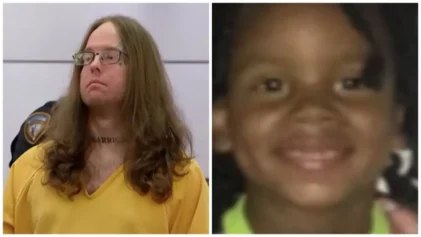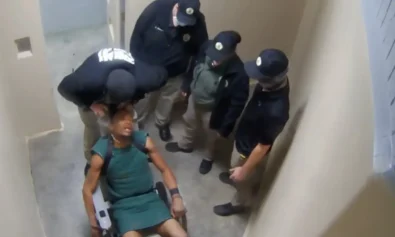The number of missing and murdered Black women and girls is at a crisis level when compared to women of other racial groups in the country. Minnesota state Rep. Ruth Richardson noted at a press conference this week, “between 64,000 and 75,000 Black women and girls that are currently missing.”
Lakeisha Lee knows all too well what it is like to have a loved one murdered and missing, in February 2013 in Minneapolis, Minnesota, her 18-year-old sister, Brittany Clardy was killed by Alberto Palmer after a reported tryst between the two after meeting online. Palmer beat and bludgeoned Clardy with a hammer then hid her body in the trunk of her own car that wasn’t found until nearly two weeks later. Clardy’s family says police were not helpful during the first few days of Brittany’s disappearance.
Lee describes the courtroom for Palmer’s sentencing as devasting after Palmer explained why he murdered her sister. “He said that he found Allah and that is why he killed my sister,” she said.
Palmer was sentenced to life in prison for the murder, but the days it took to find Clardy’s body was eye-opening to her family. “Families who are up at night, who are up looking at night, continuing to look at flyers, in neighborhoods and following leads, I couldn’t imagine going through that more than the ten days that I did,” Lee said.
In 2020, 268,884 women were reported missing in the U.S. and a third of those reported missing were Black women according to the National Crime Information Center. To address the troubling number of Black women missing within Minnesota, the state launched a task force made up of 12 people from the community, the judicial system and law enforcement to specifically focus on missing and murdered Black women.
“We also know that Black girls are less likely to receive Amber reports, and with no Amber alerts you don’t get no media attention. That means you don’t get the same resources if a child is classified as a runaway versus a child who’s missing and in need of support, so there are structural things we need to look at in terms of how we are addressing this crisis,” Richardson said.
Richardson spearheaded the legislation for the task force which will advise the commissioner of public safety on key areas to watch for and provide a blueprint for how to solve problems affecting Black women when they arise.
“Black kids make up about 30 person of the missing kids but less than 13 percent of the media coverage so we need to talk about the media, we need to talk about law enforcement, we need to talk about human trafficking, sexual exploitation, economic exploitation and we also need to talk about violence in our cities and domestic and intimate partnerships as well,” Richardson said.
Lee has joined the task force using her own personal experiences with the loss of her sister Brittany to help close the gap of a disproportionate number of missing and murdered Black women.
“There are so many families who don’t have a voice who can’t even access the resources and tools available to them and aren’t being heard by law enforcement or their girls are being classified as runaways and no one is looking for them, that’s not okay, this taskforce brings light to that,” Lee said.
The long-term plan is for similar programs to be implemented in states across the country.
More news from our partners:


